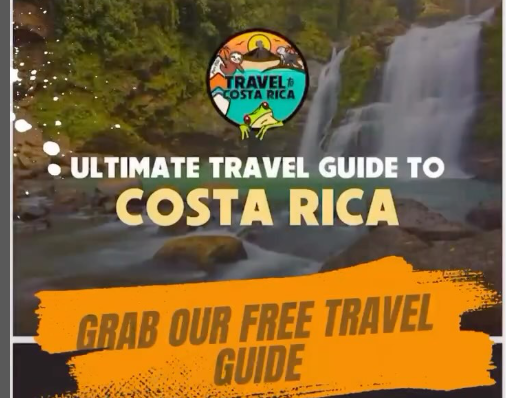The waterfalls of Costa Rica continue to thunder. Sloths continue to take naps on treetops. And the surf continues to crash onto Pacific beaches with a rhythm that seems to be healing, as it always has. Despite its lush tranquility, the nation has also come under more scrutiny. The governments of the United States and Canada have both released revised travel advisories in recent weeks, warning tourists to be especially cautious because of an increase in criminal activity.
These advisories aren’t calls to cancel your vacation, despite the fact that it may sound concerning. They serve as reminders to drive more sensibly, much like turning on your headlights when you’re on picturesque mountain roads. It is not only wise, but also empowering to learn how to manage risk in the setting of Costa Rica’s unparalleled natural beauty.
Costa Rica Travel Advisory Overview
| Category | Details |
|---|---|
| U.S. Advisory Level | Level 2 – Exercise Increased Caution |
| Canada Advisory Level | High Degree of Caution |
| Common Risks | Pickpocketing, robbery, fraud, sexual assault, drug-linked violence |
| Targeted Areas | San José, Jacó, Limón, Tamarindo, Puntarenas |
| Top Tips for Tourists | Avoid walking alone, don’t flash valuables, use trusted transportation |
| Travel Enrollment | U.S. STEP Program, Canadian Registration of Canadians Abroad |
| Official U.S. Source | travel.state.gov |
| Official Health Info | CDC Travel Site |
| Last Advisory Update | May 2025 |
Thinking of the Advisory as a Yellow Light Instead of a Stop Sign
A Level 2 advisory is remarkably similar to advice given for major travel destinations such as France or Mexico when it comes to international travel. It simply indicates that awareness is crucial, not that danger is approaching. Instead of a general breakdown in safety, these updates show an increase in crimes of opportunity, such as petty theft, card fraud, and bag snatching in crowded areas.
You can drastically lower your risk of becoming a target by incorporating basic safety measures, such as locking your bag at markets or refraining from late-night beach walks. This advice is essentially a checklist for remaining streetwise in paradise rather than a warning.
Starting with Intention, Safety
There’s something incredibly powerful about planning ahead. It’s very easy to take charge of your experience by booking licensed drivers through your hotel, researching neighborhoods before you arrive, and reading the local news. It’s not glamorous, but it’s definitely necessary, much like applying sunscreen before going hiking.
Many of these safety precautions are instinctive for experienced travelers. However, these minor actions are especially helpful for novices or lone explorers to confidently and peacefully traverse new ground.
What Locals and Officials Are Doing on the Ground
In recent years, local tourism authorities have made significant progress in improving their approach to traveler safety. The way that tourist areas are managed is being actively changed by increased police patrols, hotel partnerships, and education initiatives. Although violent incidents have increased in some areas, especially those linked to drug trafficking, most of the country is still safe for responsible travel.
Ticos, or Costa Ricans, are still very friendly. They have a strong stake in the nation’s reputation as a tranquil, environmentally conscious sanctuary. As evidence of their dedication to providing excellent guest service, many tour guides and hotel employees have received emergency preparedness training in addition to hospitality training.
Still a Pioneer in Latin America: Travel Health
Costa Rica is still unique in the region when it comes to health. Particularly in major cities and well-known locations like La Fortuna and Manuel Antonio, the nation’s healthcare system is incredibly dependable.
Travelers can travel with confidence if they adhere to CDC recommendations, which include updated COVID-19 protocols, typhoid and hepatitis A vaccinations, and more. The best defense against tropical discomfort is still to pack sun protection, bug repellent, and a basic medical kit.
Just a Bit More Ready, Pura Vida
Costa Rica’s national motto, “Pura Vida,” is more than just a catchphrase; it’s a way of thinking. It implies that life should be savored with purpose and thankfulness. And that message seems especially pertinent right now. The warning doesn’t mean you have to give up on your plans to meditate on the Nosara beaches or zipline through Monteverde. It’s a call to deeper engagement, not a retreat.
Prepared travelers have not only remained safe but have also changed over the past year. Without any problems, they have walked on volcanic trails, sampled mangoes at roadside stands, and observed sea turtles hatching in the moonlight. Preparation, not paranoia, was the key.



